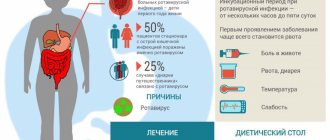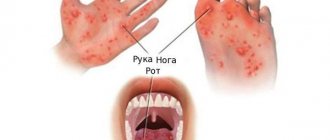Home — For the public
- Map of medical organizations
- Vaccination
- Clinical examination
- Fluorography
- Addresses and opening hours of clinics
- Emergency rooms
- Oncology
- Where to take an HIV test
- Healthy child's office
- Services
- Prevention of CVD
- Disease Prevention
- World Patient Safety Day
- Newspaper "Medical News"
- specialist
- School of Health
— Disease prevention
- HIV infection
- All about vaccination
- All about proper nutrition
- Hepatitis
- Flu
- Dementia
- Schoolchildren's health
- STD
- Tick-borne encephalitis
- Whooping cough
- Measles
- Legionellosis
- Meningococcal infection
- Oncology
- Acute intestinal infection
- Pediculosis
- First aid
- Pneumococcal infection
- Pneumonia
- Prevention of rabies
- Dependency Prevention
- Rotavirus infection
- Diabetes
- Cardiovascular diseases
- Injuries
- Tuberculosis
- Tularemia
- Physical activity
- Obstructive pulmonary disease
- Exotic infections
- Ecology
- Why is swimming in ponds dangerous?
— Flu — The child got sick with the flu
During the cold season, children and adults are more susceptible to colds. Noticing the first signs of deterioration: cough, runny nose, fever, parents are often at a loss, not knowing how to help the baby and fearing possible complications. What to do if a child gets the flu: how to recognize the disease, where to go for help, what remedies can be used to alleviate the condition.
How it spreads
The flu is highly contagious, especially when children are in enclosed spaces, such as school classrooms or daycare centers. It spreads when they inhale droplets of mucus containing live viruses that an infected person releases when they sneeze, scream, cry or cough, or when they come into direct contact with mucus or saliva from someone who has the flu (shared toys, dishes, dirty fingers). Children are contagious for about a day before symptoms appear, and then for about a week while they have symptoms.
There are ways in which the virus spreads in children: It can easily pass from child to child as they share things such as pencils, toys, computers, remote controls, spoons and forks. Another main method is after touching infected surfaces, and then children rub their eyes, nose or mouth with their fingers. Source: Clinical and laboratory characteristics of influenza in children at the present stage. Chudakova T.K., Mikhailova E.V., Zryachkin N.I. Bulletin of Volgograd State Medical University, 2013. p. 67-69.
How is gastroenteritis treated?
Rehydron - will help with rehydration therapy.
There is no specific treatment for this disease yet. The main treatment is to reduce intoxication in the body, to establish water-salt metabolism, which was disrupted by diarrhea and vomiting.
Treatment of the gastrointestinal tract is mainly symptomatic, and is aimed at reducing the negative impact of the virus on the body:
Is the flu contagious?
Flu is highly contagious. People can spread it the day before they feel sick and continue to spread it until all symptoms disappear. This is approximately 1 week for adults, but for small children the period may be longer. Influenza usually occurs in the form of annual epidemics. An epidemic is when a disease spreads quickly and affects many people in one area at the same time. Some years the epidemic becomes more severe and widespread than other years. An epidemic that spreads throughout the world is called a pandemic. This is much less common. There have been three influenza pandemics in the 20th century, and so far only one in the 21st century, the 2009 influenza A (H1N1) pandemic.
During a pandemic, wearing masks can help protect the community from the spread of viruses. All children aged 2 years and older are advised to wear masks when they are in public or around people who do not live with them and have signs of infection. Masks can help stop the spread of the flu.
What are the facts about gastroenteritis?
There are several facts you should know about a disease such as gastrointestinal flu.
Fact one. Can the flu shot help with stomach flu?
If you are sick, you need to drink a lot of water.
One of the biggest mistakes people make is that they confuse two different diseases that are caused by completely different pathogens.
Yes, some of the symptoms of the common flu may resemble the symptoms of the gastrointestinal flu, such as: headache, general intoxication, joint pain, fever.
But the regular flu will not cause severe intestinal upset in the patient, so the regular flu vaccine will not protect a person from rotavirus infection.
Flu symptoms in children
When children get the flu, they usually feel worse than if they had a cold. In children who get the flu, the first signs and symptoms usually appear about 2 days after exposure to the influenza virus. They may have:
- fever during influenza in children;
- chills;
- headache;
- muscle pain;
- dizziness;
- loss of appetite;
- fatigue;
- cough;
- sore throat or sore throat;
- runny nose;
- nausea or vomiting;
- weakness;
- ear pain;
- diarrhea.
Infants with the flu may also be restless, cry a lot, lethargic, or simply drowsy. Source: Peculiarities of influenza in children, modern treatment and prevention options. Lobzin Yu.V., Babachenko I.V., Vasiliev V.V., Uskov A.N. Consilium Medicum, 2016. p. 12-17.
Children with the flu may have many of the same symptoms as adults, but there may be differences:
- Newborns and infants may have an unexplained high fever and no other signs of illness;
- young children usually have a temperature above 39.5 degrees and febrile seizures;
- stomach upset and pain, vomiting and diarrhea are typical in young children;
- Ear pain and red eyes are common;
- In some cases, muscle inflammation can lead to severe leg or back pain.
How to help your child at home
If you suspect a respiratory infection, you should not self-medicate. If the child does not have a fever, he visits the clinic and is examined by the doctor on duty in a special box. When the temperature crosses 37 ℃, you can call a pediatrician at home. Recommendations: how to treat, to what level to lower the temperature, what to pay attention to are within the competence of the doctor. Below are general uses and warnings.
Advice from Dr. Komarovsky
An increase in temperature in response to an infectious agent entering the body is a completely normal reaction. The production of interferons, restriction of reproduction and further spread of the virus occurs against the background of fever. A well-known pediatrician shares his experience: if parents are afraid that he will not tolerate a high temperature, then they try in every possible way to “bring it down” to normal numbers. Such a baby will be sick for longer than 3-4 days. And the child whose fever remains at 37-38.5 ℃ has a better chance of a quick recovery. It produces substances that protect the body, and the virus “feels” not very comfortable and spreads less.
E. O. Komarovsky tells what can be done at home to alleviate the child’s condition:
- Cool air in the room (temperature up to 18-20 ℃), regular ventilation. The fan will not bring the desired effect: the flow of cold air can cause spasm of peripheral vessels.
- Humidify the air by any means (wetting the floor, a wet towel or a container of water on the radiator).
- Drink plenty of fluids, the temperature of which should be equal to body temperature (fruit drinks, juices, water). Raspberries increase sweating; it should not be used as a means to replenish fluid; it is not recommended for children under 1 year of age.
- Do not rub dry skin, do not use vinegar or alcohol for rubbing. A warm shower and light wiping with a towel soaked in water are allowed.
- If a child tolerates a fever up to 38.5 ℃ normally, he should not be given antipyretics.
Fighting fever with flu
When treating a child, the fight against high fever often comes to the fore. Approved medications include: paracetamol, ibuprofen. The dosage and frequency of use depend on the age of the child and the clinical situation: the medicine should not be given “hourly” 3-4 times a day. The drug is taken only when high fever and general intoxication cause severe discomfort.
The exception is children with brain damage, a tendency to episyndrome, a history of febrile convulsions, and poor tolerance to fever. They receive the drug without waiting for their body temperature to rise to 38.5 ℃. If paracetamol does not alleviate the patient's condition, a second antipyretic drug (analgin) is added to therapy.
Diagnostics
Often, what a child looks like is enough for health care providers to diagnose the flu. Children who have this disease usually have typical signs of the disease coupled with an indication of exposure to sick people during the flu season. Other infections can cause flu-like symptoms. Therefore, if the doctor needs to make sure that the child has the flu, he can perform a test. The lab will take a sample of mucus by wiping your nose or throat with a long cotton swab. Results can be ready within hours or daysSource: Diagnosis and treatment of influenza in children. Savenkova M.S. Children's infections, 2016. p. 48-54.
When to see a doctor immediately
When observing and treating a child at home, you should first of all pay attention to the symptoms of complications listed in the clinical guidelines for patient management:
- cyanosis (bluish tint) of the skin, shortness of breath at rest or when moving;
- cough streaked with blood, feeling of pain, heaviness in the chest;
- disturbances of consciousness, the child is inhibited or excited;
- convulsions;
- repeated vomiting;
- decreased blood pressure and cessation of urination;
- in children under one year of age – rapid breathing, low activity, difficulty waking up.
If your child experiences symptoms of a respiratory viral infection, you should contact your pediatrician. Particular attention should be paid to the well-being of young children or those suffering from chronic diseases.
Treatment of influenza in children
For the treatment of influenza in childhood, clinical recommendations have been developed that determine the doctor’s tactics and the necessary medications for each severity of the infection.
Most children with mild to moderate flu recover at home. How to treat viral flu in children will be determined by a doctor who needs to be called to your home.
When sick, your child should drink plenty of fluids to prevent dehydration. Also, for the duration of the fever, one must observe bed rest, which expands to semi-bed rest and home rest as the condition improves.
At high temperatures, effective medications to relieve fever and pain are ibuprofen and paracetamol. Do not give aspirin to children or teenagers because of its association with Reye's syndrome. You also need lightweight clothing that is easy to put on or take off. Children can be cold one minute and hot the next. Source: Treatment of influenza and acute respiratory viral infections in children. Zvereva N.N. RMJ. Mother and Child, 2015. p. 848-851.
Children with the flu should stay home from school and child care until they recover.
Doctors may prescribe antiviral drugs for the flu for children who have a very severe case or are at risk of developing more severe symptoms. The medicine can shorten the flu by 1-2 days. It is best if children start taking it within 48 hours of the flu starting. If the doctor prescribes antiviral medications for your child, ask about possible side effects. Doctors do not prescribe antibiotics for the flu. Antibiotics only work against bacteria, not viruses. In any case, you should always check with your doctor about what you can give your child, including vitamins and herbal supplements.
Why do children often get the flu?
The cause of the disease is a small enveloped virus. It enters the environment when coughing, sneezing, and is deposited on surfaces. The pathogen enters the body through the respiratory tract. This happens in 2 ways:
- airborne - inhalation of air containing virions;
- contact – when touching the nose or face with dirty hands.
The influenza virus spreads in the air over a distance of 1-2 meters and can persist in a room for up to several days. Even before the first symptoms appear, an infected person becomes a source of infection. This happens regardless of whether he subsequently gets sick or not. This explains why outbreaks often occur in child care institutions.
Of course, one should not assume that attending school and kindergarten is the only reason for infection. The flu often “lies in wait for its victim” in places such as:
- shopping and entertainment centers;
- sections and circles;
- cinema, theaters, exhibitions;
- public transport;
- medical institutions.
Knowing that the epidemic begins to “gain momentum” in October-November, and the maximum incidence occurs in January-February, you can take care of your child’s health in advance. Talking about how to avoid getting infected with the flu, WHO representatives point out that timely vaccination prevents the development of the disease in 60-85% of people under 18 years of age.
Complications
The flu can lead to other health problems. This could be inflammation of the sinuses (sinusitis), development of otitis media, exacerbation of asthma, or pneumonia. Call the doctor if your child's fever lasts more than 3 to 4 days. Also call if they complain of difficulty breathing, ear pain, nasal congestion or severe headache, a cough that does not go away, or if the condition seems to be getting worse.
Young children under 2 years of age are more likely than older children to be hospitalized due to complications of the flu.
What should you do if you or your child has rotavirus or a similar infection?
In addition to drinking plenty of fluids, you should follow a diet. From the diet you need to exclude foods that are difficult to digest or irritate the mucous membrane: whole milk, fatty milk, fried, smoked, concentrated juices, fresh fruits and vegetables. Yartseva recommends taking antipyretic drugs only when necessary. “You shouldn’t abuse them. Children should not be given ibuprofen frequently. It cannot be used for a long time and constantly; it must be alternated with paracetamol. If that doesn’t help, you can sometimes add ibuprofen,” says Yartseva.
Additional reminder on prevention
To reduce the chance of spreading the flu, everyone in your household should:
- Wash thoroughly and often with soap and warm running water, especially after coughing or sneezing and before eating or preparing food.
- Never share used tissues or reusable tissues.
- Never share cups or cutlery.
- Do not go to work or school if they have the flu.
- When coughing or sneezing, cover your mouth and nose with a disposable tissue and then throw it in the trash.
- Cough or sneeze into your forearm, not into your hands, when there is no tissue. Source: Modern approaches to the treatment and prevention of ARVI and influenza in children. Sidorovich O.I. Medical Council, 2014. p. 14-17.
Sources:
- Diagnosis and treatment of influenza in children. Savenkova M.S. Children's infections, 2016. p. 48-54
- Treatment of influenza and ARVI in children. Zvereva N.N. RMJ. Mother and Child, 2015. p. 848-851
- Features of influenza in children, modern treatment and prevention options. Lobzin Yu.V., Babachenko I.V., Vasiliev V.V., Uskov A.N. Consilium Medicum, 2016. p. 12-17
- Clinical and laboratory characteristics of influenza in children at the present stage. Chudakova T.K., Mikhailova E.V., Zryachkin N.I. Bulletin of Volgograd State Medical University, 2013. p. 67-69
- Modern approaches to the treatment and prevention of ARVI and influenza in children. Sidorovich O.I. Medical Council, 2014. p. 14-17
The information in this article is provided for reference purposes and does not replace advice from a qualified professional. Don't self-medicate! At the first signs of illness, you should consult a doctor.
Is there any special treatment for such diseases?
“For influenza, in the first 72 hours you can use several effective drugs that reduce the duration of the disease. And for other viruses there is no specific treatment. Therefore, a clinical picture, observation of how the disease progresses, and an examination by a doctor are sufficient. And with timely symptomatic therapy and compliance with bed rest, complications can be avoided,” says Yartseva. The expert reminds: self-medication is dangerous. “To find out the cause of the disease, you need to go to the doctor. Some people may experience vomiting, while others may have diarrhea. Depending on the symptoms, the doctor will prescribe treatment. The main general recommendations include drinking plenty of fluids,” says the doctor.
Question answer
Does cola help with rotavirus?
Prices
| Name of service (price list incomplete) | Price |
| Online opinion of a pediatrician (SPECIAL) | 0 rub. |
| Appointment (examination, consultation) with a pediatrician, primary, therapeutic and diagnostic, outpatient | 1950 rub. |
| Consultation (interpretation) with analyzes from third parties | 2250 rub. |
| Prescription of treatment regimen (for up to 1 month) | 1800 rub. |
| Consultation with a candidate of medical sciences | 2500 rub. |
Main routes of infection
Influenza is transmitted by airborne droplets. An invisible drop (0.0001 ml) of secretion from the nasopharynx is enough to become infected. The virus is also transmitted through household contact. If there is a sick person in the house, he should have individual hygiene items, dishes, and bed linen. You can also become infected through contact. For example, a person sneezed while covering his mouth with his hand. Hands are rarely washed after this. By touching various objects, a person expands the area of potential infection. Crowds of people and closed types of premises are places where the flu spreads with lightning speed.









